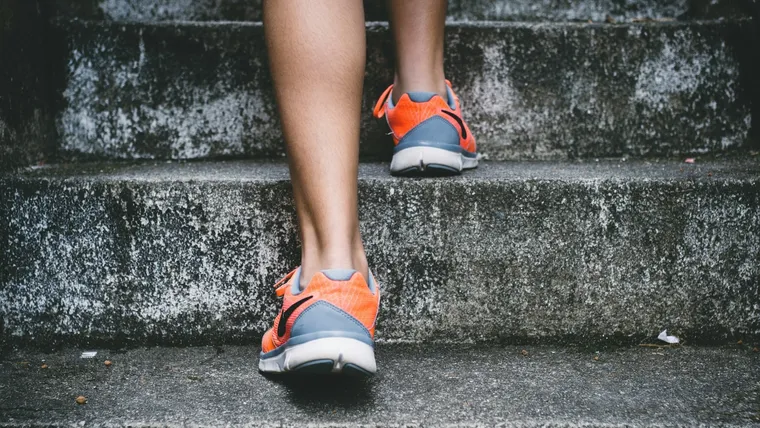A stroke, a sudden disruption of blood flow to the brain, can have devastating effects, often leading to physical limitations and impacting overall quality of life. However, exercise plays a crucial role in stroke recovery, helping survivors regain lost function, improve strength, and enhance their independence. Discover more about the power of exercise after stroke and how it can pave the way for a more fulfilling life.
Why Exercise is Essential After a Stroke:
Exercise is not just recommended after a stroke; it's essential. It offers a multitude of benefits, including:
- Improved Motor Function: Targeted exercises can help rebuild neural pathways in the brain, leading to improved strength, coordination, and balance. This can translate to greater ease in performing everyday tasks like walking, dressing, and eating.
- Increased Mobility: Regular physical activity can prevent muscle stiffness and contractures, improving joint flexibility and range of motion. This can lead to greater independence and reduce the risk of further complications.
- Enhanced Cardiovascular Health: Stroke survivors are at increased risk for cardiovascular disease. Exercise strengthens the heart, improves circulation, and helps manage blood pressure and cholesterol levels, reducing the risk of future strokes.
- Boosted Mood and Cognitive Function: Exercise releases endorphins, which have mood-boosting effects. It can also improve cognitive function, memory, and concentration, helping survivors regain mental clarity and emotional well-being.
- Reduced Fatigue: While it may seem counterintuitive, regular exercise can actually reduce fatigue, a common complaint after stroke. It increases energy levels and improves sleep quality, leading to a greater sense of vitality.
- Increased Independence: By improving physical function and mobility, exercise empowers stroke survivors to regain independence in daily activities, reducing their reliance on caregivers.
Types of Exercise After Stroke:
The type and intensity of exercise after stroke should be tailored to the individual's specific needs and abilities. A physical therapist can assess your condition and develop a personalized exercise program. Common types of exercise include:
- Range of Motion Exercises: These exercises help maintain joint flexibility and prevent stiffness. They involve gently moving the affected limbs through their full range of motion.
- Strengthening Exercises: These exercises focus on building strength in weakened muscles. They may involve using resistance bands, weights, or body weight exercises.
- Balance Exercises: These exercises help improve balance and coordination, reducing the risk of falls. They may include activities like standing on one leg or practicing weight shifting.
- Gait Training: Gait training focuses on improving walking ability. It may involve practicing walking on different surfaces or using assistive devices.
- Functional Exercises: These exercises mimic everyday activities, such as reaching for objects, getting dressed, or climbing stairs. They help survivors regain the skills needed for independent living.
- Aerobic Exercise: Aerobic exercise, such as walking, swimming, or cycling, improves cardiovascular health and endurance. It's important to start slowly and gradually increase the intensity and duration of aerobic exercise.
Getting Started with Exercise After Stroke:
It's crucial to consult with your doctor and a physical therapist before starting any exercise program after a stroke. They can assess your condition, identify any limitations, and develop a safe and effective exercise plan. Here are some tips for getting started:
- Start slowly and gradually increase intensity: Don't try to do too much too soon. Begin with gentle exercises and gradually increase the intensity and duration as you get stronger.
- Listen to your body: Pay attention to any pain or discomfort you may experience. Stop the exercise if you feel any sharp pain and consult with your therapist.
- Be consistent: Consistency is key to seeing results. Try to exercise regularly, even if it's just for a few minutes each day.
- Find a support system: Exercise with a friend, family member, or support group to stay motivated.
- Celebrate your progress: Acknowledge and celebrate your achievements, no matter how small. This will help you stay motivated and committed to your exercise program.
The Importance of Professional Guidance:
A physical therapist plays a vital role in stroke rehabilitation. They can assess your individual needs, develop a personalized exercise program, and provide guidance and support throughout your recovery journey. They can also help you learn proper exercise techniques and prevent injuries.
Conclusion:
Exercise is a powerful tool for stroke recovery. It can help survivors regain lost function, improve strength and mobility, and enhance their independence. By working closely with a healthcare team and following a personalized exercise plan, stroke survivors can reclaim their lives and achieve a greater sense of well-being. Remember, every step forward, no matter how small, is a victory on the road to recovery.

